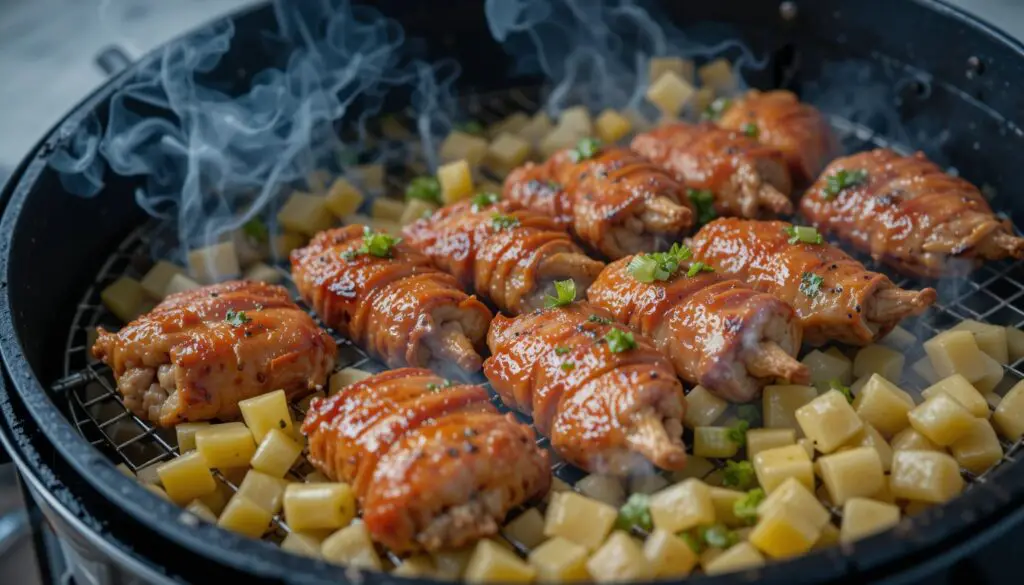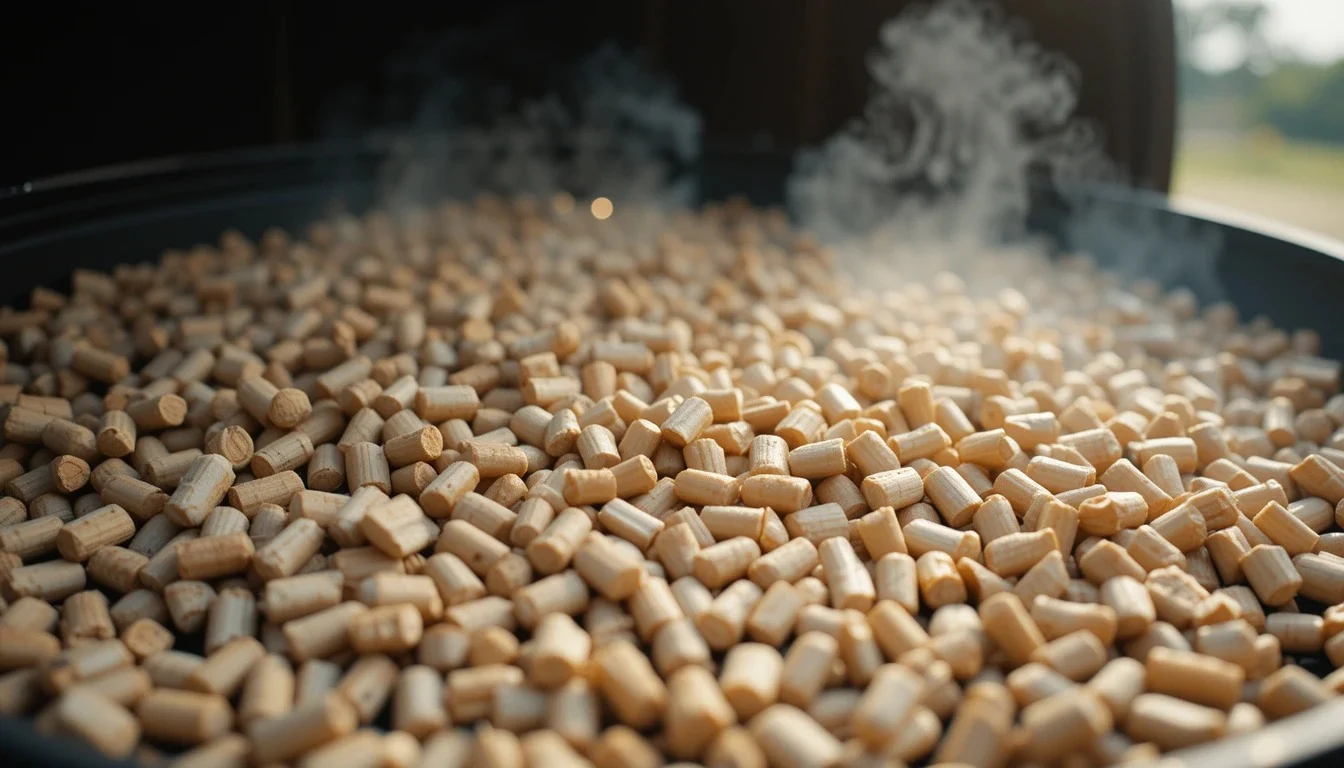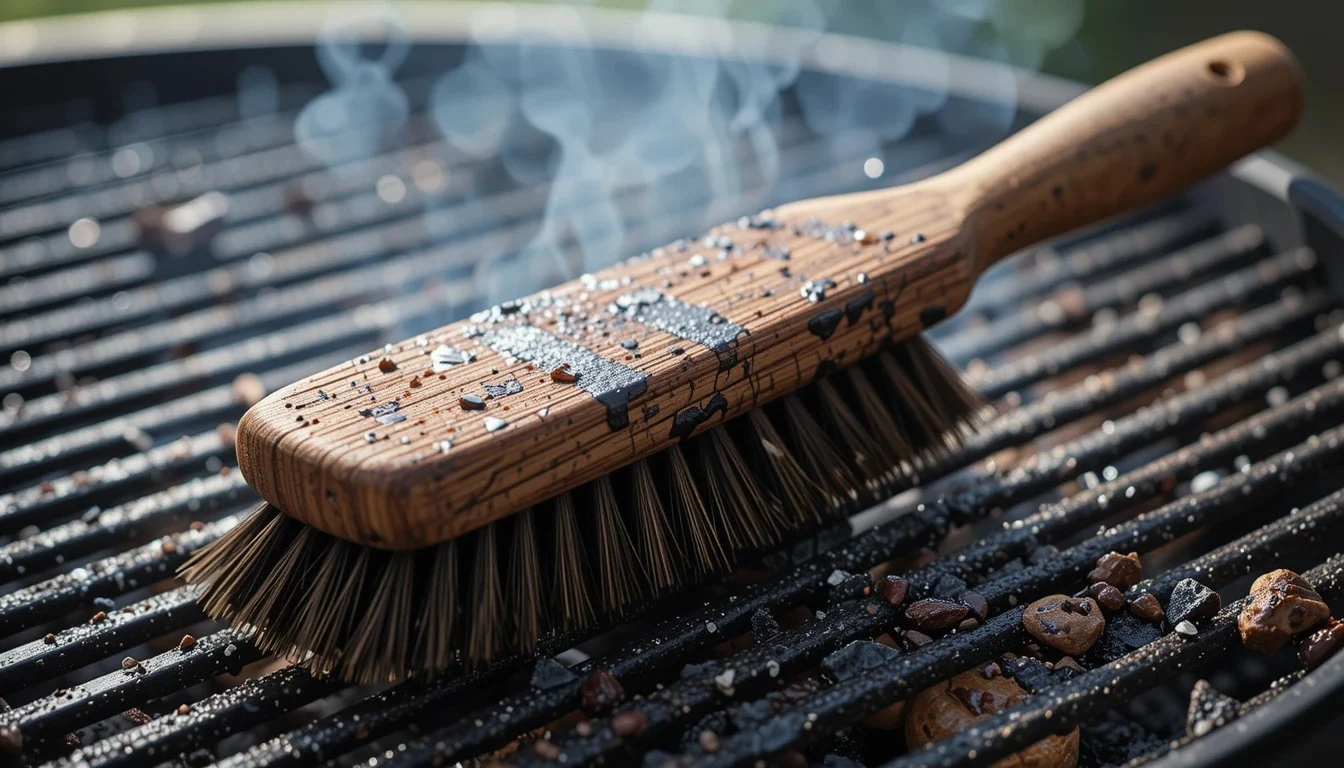The Ultimate Guide to Choosing the Best Smoker for Home in 2024

Ah, the mouthwatering aroma of smoked meats wafting through your backyard! There’s nothing quite like it, is there? If you’re ready to elevate your outdoor cooking game, you’ve come to the right place. Did you know that 95% of BBQ enthusiasts believe that owning a smoker has significantly improved their culinary skills? It’s time to join the smoky revolution! In this guide, we’ll walk you through everything you need to know to find the best smoker for your home in 2024. Get ready to impress your friends and family with restaurant-quality smoked dishes!
Types of Home Smokers: Finding Your Perfect Match
Let me tell you, finding the right smoker can be a game-changer for your backyard cookouts. I’ve been through my fair share of smokers over the years, and I’ve learned a thing or two about what works and what doesn’t. So, let’s dive into the different types of home smokers and see which one might be your perfect match.
Electric smokers: Convenience and consistency at your fingertips
I remember when I first got my hands on an electric smoker. It was like a revelation! No more babysitting the temperature or constantly adding fuel. These babies are all about convenience and consistency. You just set the temperature, add your wood chips, and let it do its thing.
Electric smokers are great for beginners or folks who don’t want to spend all day monitoring their cook. They’re also fantastic for apartment dwellers or anyone with limited outdoor space. The downside? Some purists argue that you don’t get quite the same depth of flavor as with other methods. But honestly, I’ve had some pretty darn tasty ribs come out of my electric smoker.
Pellet smokers: The tech-savvy choice for precise temperature control
Now, if you’re a bit of a gadget geek like me, you might fall in love with pellet smokers. These are like the smart homes of the smoking world. They use wood pellets as fuel and have digital controls that let you set the exact temperature you want.
I gotta admit, I was skeptical at first. But after trying my buddy’s pellet smoker, I was hooked. The temperature control is spot-on, and you can even control some models with your smartphone. How cool is that? Plus, the flavor from the wood pellets is fantastic. The only drawback? They can be a bit pricier than other options, and you need electricity to run them.
Charcoal smokers: Traditional flavor for the purists
Ah, charcoal smokers. These are the old-school classics that many BBQ enthusiasts swear by. And I gotta say, there’s something special about the flavor you get from charcoal. It’s that authentic, smoky taste that just can’t be beat.
I learned to smoke on a charcoal smoker, and it was definitely a learning curve. You’ve gotta manage your fire, keep an eye on the temperature, and add fuel as needed. But man, when you get it right, it’s like smoky heaven. The downside is that it takes more effort and attention than some other types. But for many, myself included, that’s part of the fun.
Gas smokers: Quick and easy for busy households
Gas smokers are like the reliable family sedan of the smoking world. They’re not the fanciest option out there, but they get the job done with minimal fuss. I’ve found them to be a great middle ground between the convenience of electric and the flavor of charcoal.
What I love about gas smokers is how quickly they heat up and how easy they are to maintain a steady temperature. You don’t have to mess with charcoal or pellets, and you’re not tethered to an electrical outlet. They’re perfect for those weeknight smokes when you don’t have all day to tend to your meat. The trade-off? You might not get quite as much smoke flavor as with other methods.
Offset smokers: The classic choice for serious pitmasters
Last but not least, we’ve got offset smokers. These are the big boys, the ones you see at BBQ competitions and serious backyard setups. I’ll never forget the first time I cooked on an offset smoker – it was like conducting a meaty symphony!
Offset smokers have a separate firebox attached to the main cooking chamber. You build your fire in the firebox, and the smoke and heat travel through the cooking chamber. This gives you incredible control over your smoke and heat, but it also requires a lot of skill and attention.
I love my offset smoker for big cooks and when I really want to impress. But I’ll be honest, it’s not something I break out for a quick weeknight dinner. It’s more of a weekend project kind of thing. If you’re passionate about BBQ and don’t mind the learning curve, an offset smoker can produce some of the best BBQ you’ll ever taste.
Key Features to Consider When Choosing Your Home Smoker
Alright, now that we’ve covered the different types of smokers, let’s talk about what you should look for when you’re shopping for one. Trust me, I’ve made my share of mistakes in this department, so learn from my experiences!
Size and capacity: Matching your smoker to your cooking needs
Size matters, folks! And I’m not just talking about bragging rights. The size of your smoker should match your typical cooking needs. I learned this the hard way when I bought a massive offset smoker for my small family. It was overkill, and I wasted a lot of fuel heating up space I wasn’t using.
On the flip side, I’ve also been caught short with a too-small smoker when hosting a big July 4th cookout. Talk about a stressful day! So think about how much you usually cook. Are you smoking for just you and your partner, or are you the go-to BBQ master for your entire extended family?
Also, consider the types of food you’ll be smoking. If you’re all about briskets and pork butts, you’ll need more space than if you’re mainly doing ribs and chicken. And don’t forget to factor in your available outdoor space. That dream smoker won’t do you much good if it doesn’t fit on your patio!
Temperature control: The secret to perfectly smoked meats
Let me tell you, temperature control can make or break your BBQ. I’ve had some spectacular failures due to poor temperature management, including a brisket that ended up more like beef jerky. Not my proudest moment!
Different types of smokers offer varying levels of temperature control. Electric and pellet smokers are generally the easiest to control, with digital thermostats that let you set a precise temperature. Gas smokers are pretty good too, though not quite as precise.
Charcoal and offset smokers require more hands-on temperature management. You’ll need to adjust vents, add fuel, and generally babysit your cook. It’s more work, but some folks (myself included) find it rewarding.
Whatever type you choose, look for features that help with temperature control. Things like built-in thermometers, adjustable vents, and insulated construction can all make a big difference. And invest in a good digital meat thermometer. Trust me, it’s a game-changer!
Ease of use: From beginner-friendly to expert-level options
When I first started smoking meat, I dove in headfirst with a complex offset smoker. Big mistake! I spent more time frustrated than enjoying the process. So, consider your experience level and how much time you want to invest in learning.
Electric and gas smokers are generally the most beginner-friendly. They’re pretty much “set it and forget it” affairs. Pellet smokers are also fairly easy to use, though they have more features to learn.
Charcoal and offset smokers have a steeper learning curve. They require more attention and skill to manage the fire and maintain consistent temperatures. But for some folks, that’s part of the appeal. It’s like the difference between automatic and manual transmission cars.
Don’t be afraid to start simple and work your way up. There’s no shame in using a more automated smoker while you learn the basics of BBQ. You can always upgrade later if you catch the smoking bug!
Durability and construction: Investing in a long-lasting smoker
I learned this lesson the hard way: a cheap smoker can end up costing you more in the long run. My first smoker was a budget model that rusted out after just two seasons. Talk about false economy!
Look for smokers made from high-quality materials. Stainless steel is great for durability and easy cleaning. Thick-gauge steel helps with heat retention and even cooking. Check the construction of the doors and vents too – you want tight seals to prevent heat and smoke loss.
Consider the climate where you live. If you’re in a humid area like I am, rust resistance is crucial. And if you plan to move your smoker around, look for sturdy wheels and handles.
Remember, a good smoker can last for years, even decades, with proper care. It’s worth spending a bit more upfront for a well-built model that will stand the test of time.
Versatility: Multi-purpose smokers for various cooking styles
Here’s something I wish I’d thought about when I bought my first smoker: versatility. Because let’s face it, as much as we love smoked meat, sometimes you want to grill a burger or roast a chicken.
Many smokers these days are designed to do double (or triple) duty. Pellet grills, for instance, can smoke low and slow or crank up the heat for grilling. Some offset smokers have a grill grate in the firebox for direct heat cooking.
Consider what other types of cooking you enjoy. Do you want something that can do it all, or are you okay with having separate tools for different jobs? Personally, I love my multi-purpose pellet grill for its flexibility, but I still keep a dedicated offset smoker for when I want that traditional BBQ experience.
Also, think about accessories and add-ons. Some smokers offer options like rotisserie attachments, pizza stones, or even WiFi connectivity. These can expand your cooking possibilities and make your smoker more versatile.
Top Picks for the Best Home Smokers in 2024
Alright, now that we’ve covered what to look for, let’s talk about some specific models that are knocking it out of the park this year. I’ve had the chance to try out quite a few smokers, and these are the ones that really impressed me.
Best overall: The Traeger Pro 575 Pellet Grill and Smoker
I gotta tell you, the Traeger Pro 575 is a beast. It’s like the Swiss Army knife of smokers – it does a bit of everything, and does it well. I was skeptical about pellet grills at first, but this one made me a believer.
What I love about the Pro 575 is its versatility. You can smoke, grill, bake, roast, and even braise in this thing. The digital controls make it super easy to set and maintain temperatures, and the WiFi connectivity (they call it WiFIRE) lets you monitor and control your cook from your phone. I’ve literally adjusted my brisket cook from the comfort of my couch!
The 575 square inches of cooking space is plenty for most families, and the build quality is top-notch. It’s not the cheapest option out there, but for the features and performance you get, I think it’s worth every penny.
Best budget-friendly option: Weber Smokey Mountain Cooker
Now, if you’re looking to get into smoking without breaking the bank, the Weber Smokey Mountain is hard to beat. This charcoal smoker has been around forever, and for good reason – it just works.
I started out with a Smokey Mountain, and I still use it regularly. It’s simple to use, holds temperature well, and produces great results. The 18-inch model is perfect for most folks, but they also make 14-inch and 22-inch versions.
What I appreciate about the Smokey Mountain is its simplicity. There’s no electronics to fail, no gas to run out. Just good old charcoal and wood. It does require more attention than some other options, but it’s a great way to learn the fundamentals of smoking.
Best for beginners: Masterbuilt 30-Inch Digital Electric Smoker
If you’re just starting out and want something foolproof, check out the Masterbuilt 30-Inch Digital Electric Smoker. This thing is about as easy as it gets. You just set the temperature, load up the wood chip tray, and let it do its thing.
I recommended this smoker to my brother-in-law when he wanted to get into BBQ, and he loves it. The digital controls are straightforward, and the insulated construction helps maintain consistent temperatures. It’s not huge, but the 30-inch model can still handle a couple of pork butts or a small brisket.
The downside is that you don’t get quite the same smoke flavor as with charcoal or wood smokers. But for beginners or folks who want convenience, it’s a great option.
Best for large gatherings: Oklahoma Joe’s Highland Reverse Flow Smoker
When it comes to feeding a crowd, the Oklahoma Joe’s Highland Reverse Flow Smoker is a champ. This offset smoker has a huge cooking chamber and can handle multiple briskets or a whole hog if you’re feeling ambitious.
I used one of these at a family reunion last summer, and it was a lifesaver. The reverse flow design helps distribute heat and smoke evenly, which is great when you’re cooking a lot of food. It’s built like a tank, too – thick steel construction that should last for years.
Fair warning, though: this is not a beginner’s smoker. It requires some skill to manage the fire and temperature. But if you’re ready to take your smoking game to the next level and you often cook for large groups, it’s hard to beat.
Best portable option: Green Mountain Grills Davy Crockett Pellet Grill
Last but not least, let’s talk about portable smokers. The Green Mountain Grills Davy Crockett is a little powerhouse that’s perfect for camping, tailgating, or small patios.
I was amazed at how well this little guy performs. It’s a pellet grill, so you get precise temperature control, but it’s small enough to throw in the back of your car. It even runs on 12V power, so you can plug it into your car’s cigarette lighter!
Despite its small size, the Davy Crockett can still turn out some impressive BBQ. I’ve done ribs, chicken, and even a small brisket on mine. It’s not going to replace a full-size smoker for big cooks, but for portability and convenience, it’s tough to beat.
Conclusion
Choosing the best smoker for your home doesn’t have to be a daunting task. With our guide, you’re now equipped to make an informed decision that’ll have you smoking like a pro in no time. Remember, the perfect smoker is out there waiting for you – one that matches your cooking style, space, and budget. So, what are you waiting for? It’s time to fire up that smoker and create some mouthwatering memories with friends and family. Happy smoking, and may your backyard be forever filled with the irresistible aroma of perfectly smoked delicacies!
FAQ
How much should I expect to spend on a good home smoker?
Prices range from $200 for entry-level models to $1000+ for high-end units. A quality mid-range smoker typically costs between $400-$700.Are electric smokers as good as traditional charcoal smokers?
Electric smokers are more convenient but may lack the authentic smoky flavor of charcoal. They’re great for beginners or those prioritizing ease of use.How often should I clean my smoker?
Clean your smoker after every 2-3 uses to maintain its performance and prevent flavor contamination.Can I use my smoker in winter?
Yes, but you’ll need to account for longer cooking times and higher fuel consumption due to colder temperatures.What’s the difference between smoking and grilling?
Smoking uses low temperatures (usually under 300°F) and longer cooking times to infuse food with smoky flavor, while grilling uses high heat for faster cooking.


